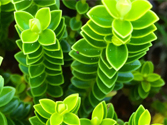Regardless of the biodegradable material in "biodegradable" and "biodegradable" what deficiencies, in the context of the global plastic limit, it has been need to lead the market, the future biological basis of biodegradable plastics will be deep mining, better serve the society, repair plastic earth, small make up for the PLA, PHA is confident.
The market value of biodegradable polymers is expected to increase as demand for "green" alternatives to conventional polymers grows. According to IHS Markit(London), the market for biodegradable plastics is now worth more than $1.1 billion and could reach $1.7 billion by 2023. However, the report's summary said the valuation depends on a growing number of regulations and bans, particularly in Western Europe, with many countries banning single-use plastic bags and other single-use plastic items such as drinking water straws.
The commission's recent directive to limit plastic bags, plastic straws, drinking utensils, service utensils and cutlery has been widely accused of being a blatant conflict of interest, with the consultation process and impact assessments conducted in accordance with the commission's own rules and biased. The author thinks that Western Europe will be at the forefront of the demand for biodegradable plastics.
Biodegradable or compostable polymers are polymers based on biological or fossil fuels that are broken down into carbon dioxide and water by microorganisms in industrial or urban composting facilities, IHS Markit said. It should be noted, however, that biodegradable and compostable plastics have their own problems.
Many industrial cities' composting facilities won't accept any "compostable" plastics, as most find the six-month timeframe claimed by some compostable plastics manufacturers to be overly optimistic. I spoke with a compost facility manager in Portland who once said that even after a year, there's still a lot of plastic in compost. For this reason, most urban composting facilities only accept food and yard waste.
Biodegradable plastics also have its problems. As I read some mainstream media articles, I noticed that people don't understand what real biodegradability requires. Many people believe that biodegradation can occur in landfills, which is wrong. Municipal landfills are "" sanitary" "landfills, meaning they are wrapped in thick plastic sheeting so that the waste does not smell or discharge any harmful substances into the underground aquifer. Sanitary landfills do not have any of the conditions required for biodegradation: water, microorganisms and oxygen. Obviously, these things are biodegradable in the open air and water, but we're back to the problem of litterers, who throw plastic bags and other plastic waste into the environment. At least this biodegradable plastic can break down into small pieces over a year or so.
The words "biodegradable" and "biodegradable" have another problem. In California, there are strict laws governing the sale and labeling of biodegradable plastic products, including those that claim to be biodegradable. This is to prevent certain plastic products from being "" bleached green" ".
Recycling bureau (CalRecycle) on July 25, 2018, issued a new statement said: "whether express or implied environmental marketing claims, must be confirmed by reliable scientific evidence, and reach a certain standard, in order to prevent the consumers of biodegradable plastic products (including plastic bags, food service equipment and packaging) the environmental impact of misunderstanding."
"The law requires clear scientific evidence to support environmental claims, and biodegradation is a complex process that depends on physical and chemical structures, environmental conditions and time," the new notice warned.
In 2012, the FTC revised the "green guide" (starting in 1992), adding examples and guidelines for the use of terms such as "compostable" and "biodegradable", as well as new chapters on the renewable energy statement and the renewable materials statement.
For those who spend their money on the compostable and compostable plastics market, it's wise to make sure the materials are truly mainstream in the long run before investing too much.
Article source: China plastic online original







